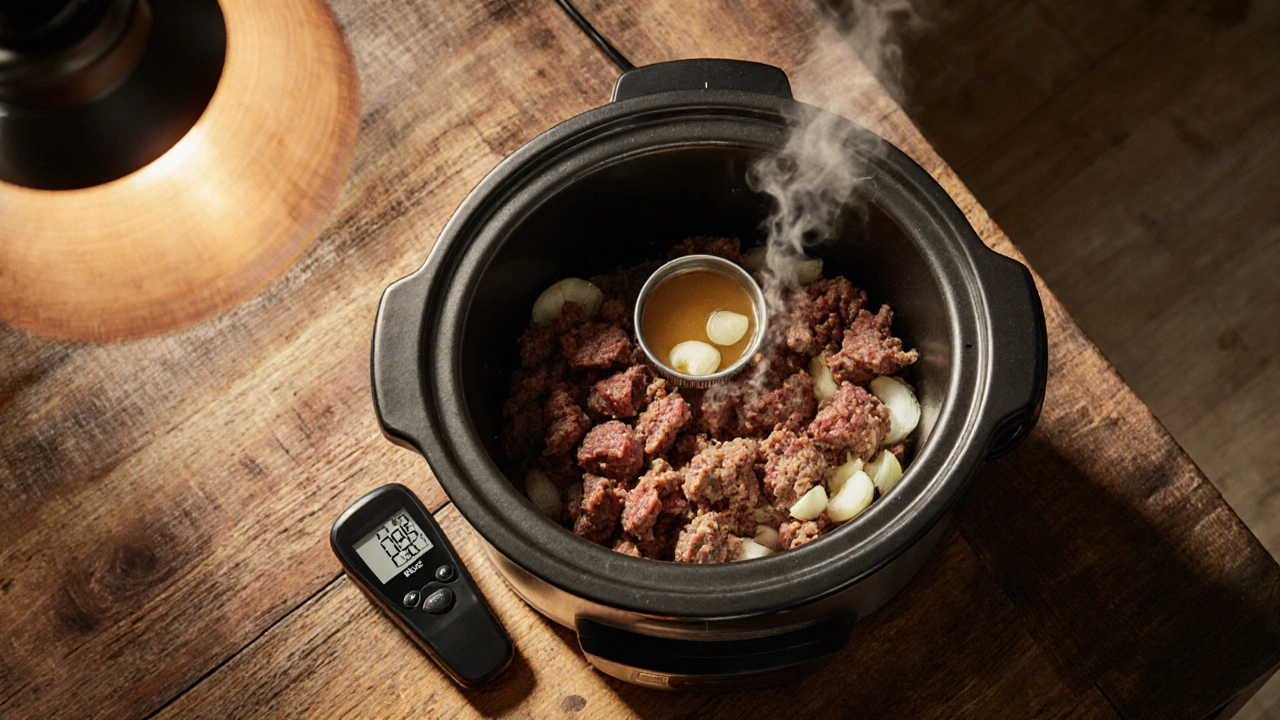Raw Hamburger: Everything You Need to Know
When working with raw hamburger, freshly ground beef that’s not yet cooked. Also known as ground beef, it forms the base of countless dishes from classic burgers to hearty sauces. Ground beef, the meat before it’s shaped or seasoned provides protein, fat, and flavor, while seasoning, the blend of salt, pepper, herbs, and spices activates taste buds and balances moisture. Understanding these three entities helps you turn a simple slab of meat into a safe, juicy, and delicious patty.
Why Safety and Seasoning Matter
Raw hamburger requires strict temperature control: keep it below 40°F (4°C) in the fridge and never leave it at room temperature for more than two hours. This rule prevents harmful bacteria like E. coli from multiplying. When you’re ready to cook, the USDA recommends an internal temperature of 160°F (71°C) for ground beef, which eliminates most pathogens. Seasoning influences the final flavor profile, but it also affects moisture retention. A basic blend—coarse sea salt, cracked black pepper, and a pinch of garlic powder—creates a crust while letting the meat stay juicy. For a richer taste, add fresh herbs like thyme or a splash of Worcestershire sauce; these ingredients interact with the meat’s proteins, enhancing the Maillard reaction during searing. Cooking equipment, cast‑iron skillet or grill grates plays a role too, as a hot surface locks in juices and forms that coveted caramelized exterior.
Preparing your raw hamburger starts with proper handling: wash your hands, use a clean cutting board, and avoid cross‑contamination with ready‑to‑eat foods. Shape the meat gently; over‑working creates dense patties that dry out. Aim for a thickness of about ¾‑inch and make a small indentation in the center—this prevents puffing up in the middle. Once formed, let the patties rest for 10‑15 minutes before cooking; this step lets the seasoning settle and the meat bind. When you hit the heat, you’ll notice the patty searing quickly, a sign that the surface temperature is high enough for flavor development. After flipping once, finish cooking until the internal temperature hits the safe threshold, then let the patty rest for a few minutes. This brief rest redistributes juices, ensuring every bite is moist.
Below you’ll find a curated selection of articles that dive deeper into each aspect of raw hamburger—from budget‑friendly family dinner ideas that feature the classic American burger, to science‑backed tips on keeping meat juicy, and even the cultural history that made the hamburger America’s #1 dish. Whether you’re a novice looking for simple steps or an experienced cook seeking flavor tweaks, the list offers practical guidance and fresh inspiration. Explore the posts to sharpen your technique, expand your seasoning arsenal, and turn raw hamburger into a star‑ready meal every time.

Cooking Raw Ground Beef in a Slow Cooker: Safety Tips and Easy Recipes
Learn how to safely cook raw hamburger in a slow cooker, with step‑by‑step instructions, safety tips, and two easy recipes that deliver flavor without extra hassle.
More Detail